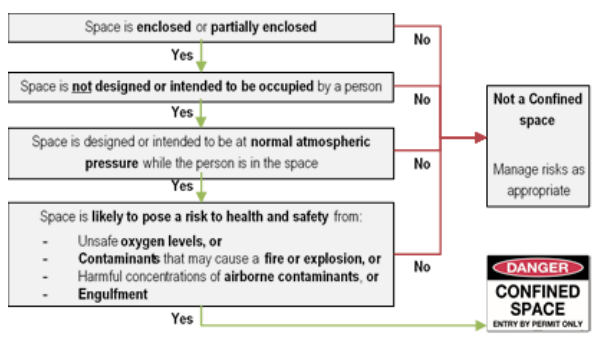Title Page
-
Pre-start meeting conducted by
-
Date and Time
-
Scope of works for shift
-
Site / Project
-
Address
-
Nearest Hospital (incl. address)
-
First Aid Officers (incl. phone number)
-
CP Supervisor details: (incl. phone number
-
Downer Supervisor details: (incl. phone number)
-
Site map completed? (see section 6)
-
Vehicle and plant pre-starts completed?
-
Are all personnel authorised to work on site?
-
Site packed up and made safe at end of shift?
Record
SECTION 2 – SITE ACTIVITY HAZARD IDENTIFICATION
Critical Risks
-
Working near mobile plant / moving vehicles
-
Uncontrolled movements of vehicles or loads
-
Movement of vehicles on public roads
-
Working on / near energised services / electrical installations
-
Work near underground assets
-
Stored energy
-
Confined space entry (do you have a permit?)
-
Crane operation and lifting equipment
-
People or objects falling from height or to depth (do you need a permit?)
-
Excavation and trenching >1.5m depth
-
Handling / transporting hazardous substances & dangerous goods
-
High risk health hazards
High Risk Activities
-
Working near traffic or within a rail corridor or near shipping lanes
-
Asbestos removal / disturbance
-
Demolition of load bearing structures
-
Work on / near pressurised gas distribution mains or piping
-
Artificial extremes of temperature
-
Contaminated or flammable atmospheres
-
Structural alterations / temporary support structures including scaffolding
-
Working near or over water with risk of drowning
-
Work on / near chemical, fuel or refrigerant lines
-
Work on / near telecommunication towers / antennae
-
Work in a tunnel or shaft
-
Occupational diving
-
Tilt-up / precast concrete
-
Use of explosives
-
Working in isolation
-
Hot work (do you have a permit?)
-
Hazardous manual handling
Environmental Risks
-
Working near drains, and waterways
-
Soil erosion
-
Working with hazardous liquids
-
Generation / disposal of regulated waste
-
Disturbance of flora or fauna
-
Potential to start fire
-
Generating excessive noise or dust
-
Working near heritage sites
-
Biosecurity / weed spread
-
Traffic Management Team Member Name and Signature
-
Qualification Type
- Implementation of traffic management plan
- Traffic Controller
-
Qualification Number
-
Applicable Traffic Guidance Scenario
- Scenario card/s
- Site-specific
Senario Cards
-
Choose Scenario most suitable for your site.
- 1
- 2
- 3
- 4
- 5
- 6
- 7
- 8
- 9
- 10
- 11
- 12
- 13
- 14
- 15
- 16
- 17
- 18
- 19
-
Set up time
-
Pack down time
SECTION 3 – SHIFT ACTIVITIES
-
Scheduled Activities to be Undertaken this Shift
SECTION 4 – SITE-SPECIFIC HAZARDS
-
e.g. Adverse weather conditions, high temperatures / humidity, severe weather warnings, flood warnings, total fire ban days, interface with other work, site location, nearby end users, COVID-19, TGS variations, etc.
-
Tap "+"
Item
-
Site-Specific Hazards Not Covered in SWMS
-
Controls
SECTION 5 – SITE-SPECIFIC REQUIREMENTS
-
1. A current SWMS, signed and understood by all personnel, is available onsite for all critical and high-risk activities? (record applicable SWMS numbers)
- 1
- 2
- 3
- 4
- 5
- 6
- 7
- 8
- 9
- 10
- 11
- 12
- 13
- 14
- 15
- 16
- 17
- 18
- 19
-
TCS SWMS and Reference Guide
-
SWMS Reference guide and SWMS
-
2. Required permits to work have been completed and authorised (where applicable)? (record permit details)
-
3. New personnel and role changes have been communicated?
-
4. Hazards / incidents reported since last shift have been discussed?
-
5. Suggestions / good ideas from previous shift have been captured?
-
6. PPE requirements met by all workers? (as outlined in SWMS / site-specific)
-
7. Rail-Specific: Has the Rail Safeworking pre-work brief been presented to personnel on site and all controls checked?
-
8. Gas monitoring of manholes / pits undertaken prior to entry?<br>Assess manholes / pits for confined space requirements as per flowchart in TCS-SWMS-006. Note: Record gas results on p4.
-
9. Have required isolations been completed? (EME, electrical, gas, water, etc.)
-
10. Critical risk controls have been checked and verified effective?
SECTION 6 – WORKSITE DIAGRAM i.e. zone of understanding. Recommend completion in multiple colours to increase readability
-
-
The worksite diagram can be used as a short-term works Vehicle Movement Plan (VMP) and / or to communicate (e.g. fencing, barriers, temporary warning signs, roads, or rail tracks) and / or define (e.g. exclusion zones, evacuation points, spotters, or vehicle turning bays) interfaces with other activities/ work teams (e.g. schools, shops, traffic, or overhead power).
SECTION 7 – PRE-START MEETING ATTENDEES
-
By signing this pre-start meeting record, you are confirming that you understand the activity you are employed to undertake, you understand and agree to implement the nominated controls for risks identified on this form and in SWMS / WI applicable to your work. You also confirm you are fit for duty (physically, mentally, and emotionally), not adversely affected by fatigue and meet Downer’s drug and alcohol policy requirements.
-
Tap "+"
Attendee
-
Name and Signature
-
Responsible Supervisor Declaration: I confirm that the hazards, risks and controls associated with the activities scheduled for today have been discussed with and are understood by the above attendees. (Name and Signature)
-
-
Tap "+"
-
Location
-
Time
-
O2% (19.5 – 23.5%)
-
H2S (Max. 10ppm)
-
CO (Max 25ppm)
-
LEL% (Max 5%)
















